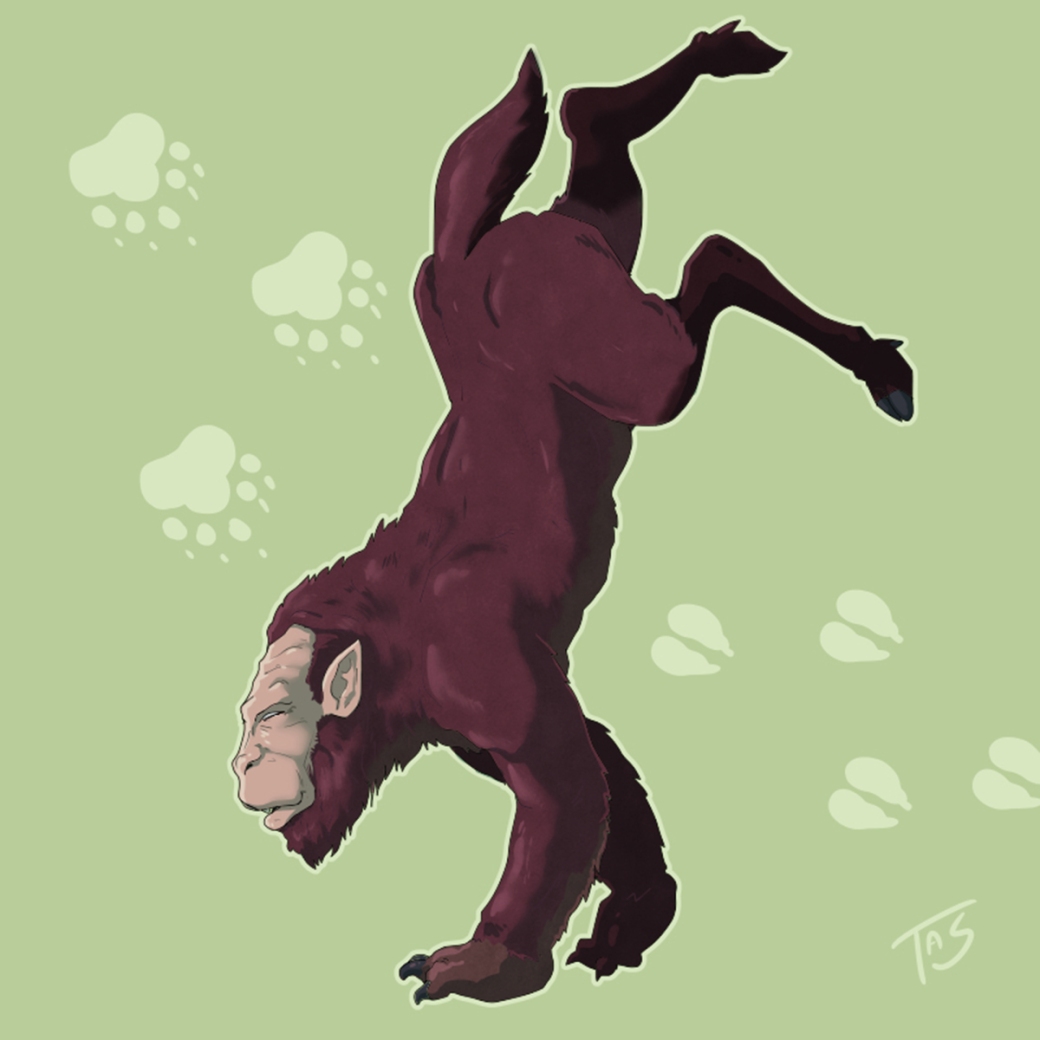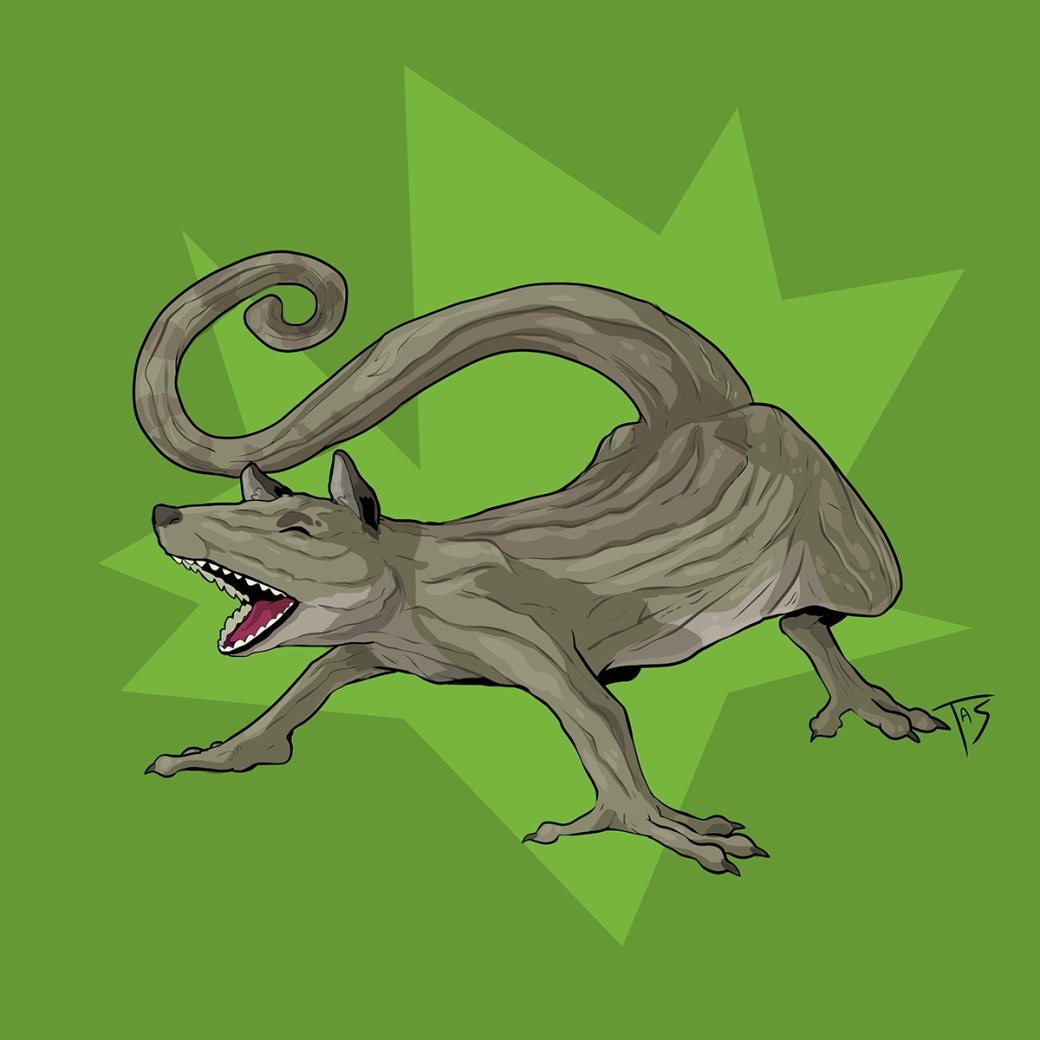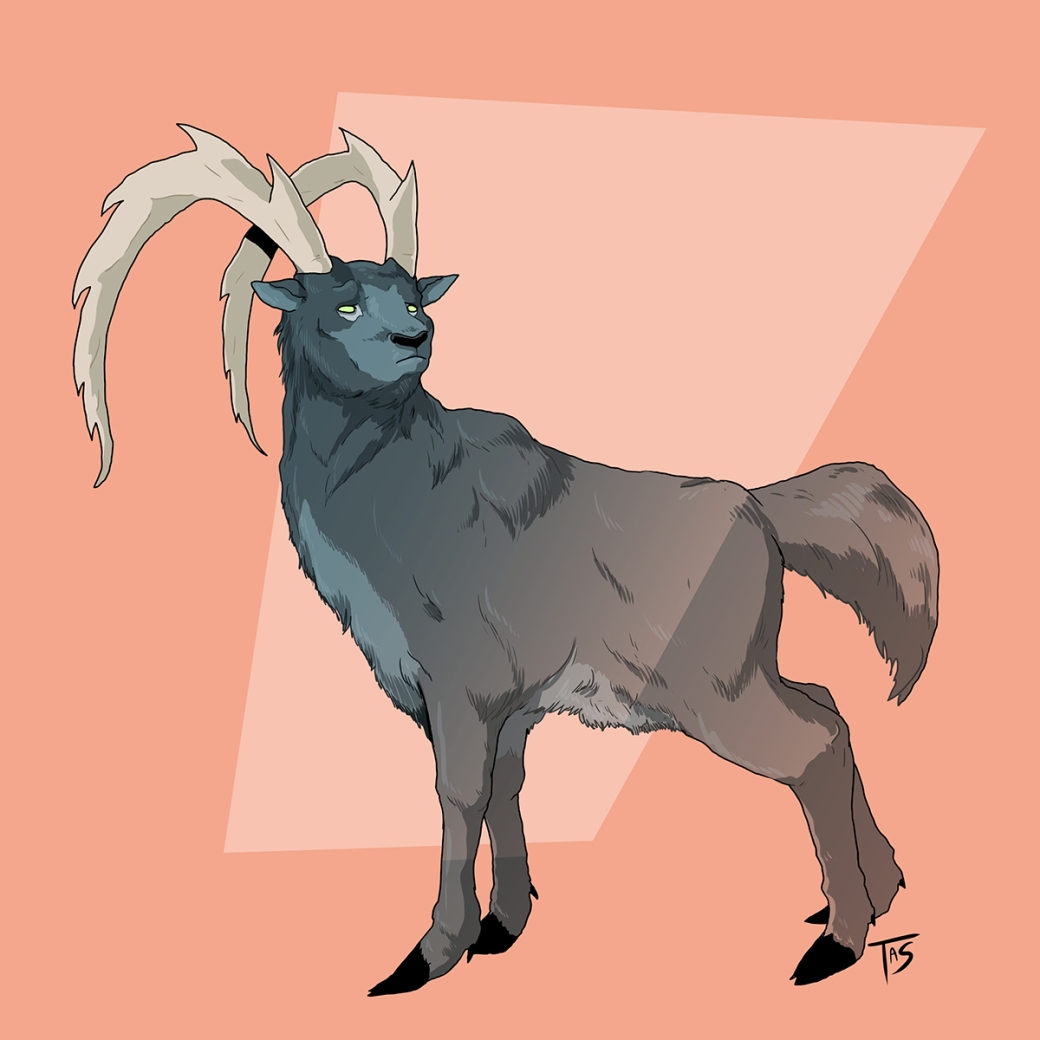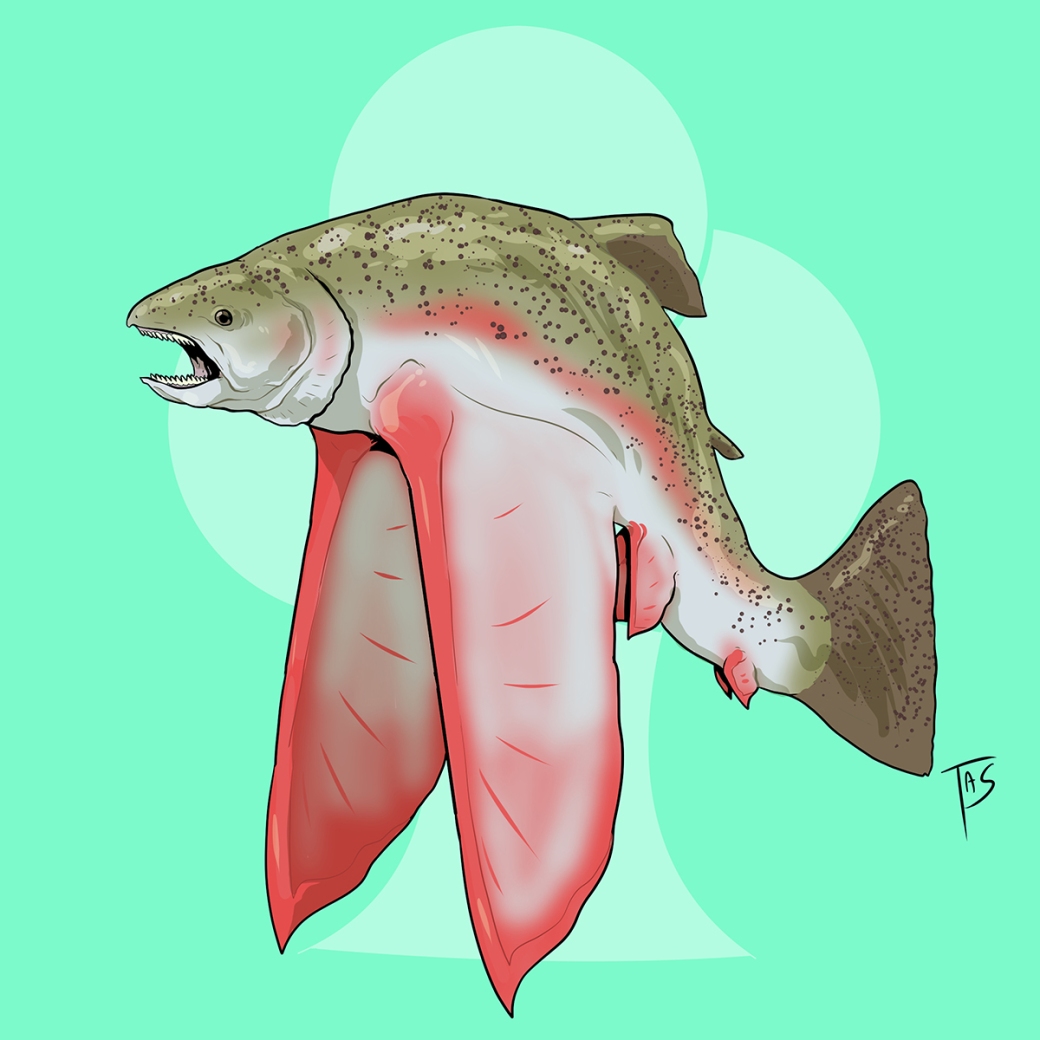
The Ground Flattener
Region of origin: Neptune/Miron
In March of 1840, Jakob Lorber began hearing the “Inner Voice,” ostensibly the voice of Jesus Christ in his heart compelling him to write down what it told him. For twenty-four years, he wrote a “New Revelation,” amounting to thousands of pages touching on faith and religion and extensive universalist knowledge, including information on the flora and fauna of the worlds outside of Earth. Among these, in 1842 he identified an eighth planet from the sun which he called Miron, four years before the official discovery of Neptune, and described the terrain and the lifeforms that lived there. One such creature, which Lorber called the Ground Flattener, or later known as the Leveller, was an elephantine creature with long, straight tusks which it used to till the soil and cone-shaped legs ending in large, flat feet which is used to stamp the prepared ground flat. The people of Miron tamed these Levellers and used them to help with the construction of their dwellings.









